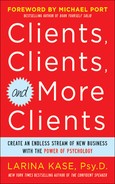Engaging Is Everything
,Have you ever heard someone speak and felt that the speaker was truly charismatic? If so, the speaker was engaging. The ability to engage others is the hallmark of charisma. You don’t have to be super-outgoing or funny to be charismatic. Some of the most effective and charismatic speakers I have seen actually have more of a calm, captivating presence about them. You cannot be effective or charismatic without being engaging and being able to hold people’s interest.
Attract and hold attention with strong visuals
Engaging is closely linked to attraction. We are drawn to certain things more than others. One of the most powerful of these things is visual imagery. Of course you should look your best, but there are other ways to include visual imagery to engage people:
• Include strong imagery in your PowerPoint presentations. Pictures draw us in. I particularly like to use photography because it is instantly recognizable to the eye. Unlike clip art, which can feel dated and amateurish, a clear, crisp photograph tends to feel modern and sophisticated.
• Use minimal words in your PowerPoint presentations. Rely instead on imagery to guide your discussion. I attended a presentation by Seth Godin, and his slides consisted of only one image or a couple of words per slide. This is a very effective way to engage your audience. When there are a lot of words on your slides, people read. Reading is passive. When, on the other hand, there are a few words or images, people listen. Listening (which is different from hearing) is active.
• Use imagery in social media. I’ve noticed that in general, the status updates on my page Facebook.com/MarketingPsych that include visual imagery get a significantly greater number of Likes and comments than those that do not. Do not, however, use images in all status updates because the variety is compelling. It is okay and in fact a good idea to use imagery in all of your blog posts. Including an image in the same location of each post unifies your blog and provides a sense of calm and consistency. You can now include images on Twitter or use TwitPic.
• Create videos. When I first returned to work after maternity leave with my second son, I did a webinar on the psychology of influence for a group of mortgage brokers. I had the option of including live video of myself in the presentation. I was torn because I know how much more engaging it is to include video, but after two months of sleep deprivation, let’s just say I had a face for radio. (I did do the video and was thankful for makeup.) Videos are one of the most engaging types of marketing because not only are they visual, but they also include movement and sound, which capture attention. Aim for balance in your sound and movement. Too much movement and nonstop talking is disconcerting and causes us to disengage and pay attention to something more stimulating. Too little movement and monotonous sound is dull, and so we disengage and pay attention to something less stimulating.
• Consider your surroundings. If you’re hosting a workshop, for example, find a setting that provides the energy you want people to feel (serene, upbeat, inspired, etc.). Again, we need to find the right balance here. If the environment is too sterile in feel, people can translate that feeling onto you and become less engaged. If the environment is too complex, people can feel overwhelmed, so they tune out rather than pay attention to you. When newborn babies sense too much stimulation in the environment, their neurological systems shut down so they don’t go into overdrive (this is one reason that babies tend to fall asleep at parties and restaurants). This reaction is not as strong in adults, but it is still present.
• Strategically use color. Think about your audience and what is attractive to them. Entrepreneur coach Ali Brown currently has a great photo on her Facebook page with a bright pink background. That photo is engaging.
Captivate with questions
In addition to the tools above that use visuals to engage people, my next favorite strategy is to use questions. In the last chapter, we discussed how questions can be excellent subject lines for e-mails because people will open your e-mail in search of the answers. Some other great ways to ask questions are:
• In your tweets or status updates in social media.
• In the titles of your articles and blog posts.
• In your presentations. Even if you are delivering a lecture that is not designed to be interactive, ask rhetorical questions. These questions transition people from passively hearing to listening and thinking, which make them engaged.
• In your print marketing. If you have a two-sided postcard, you might include a question on one side (just know that you can’t be sure which side someone will see first).
The key to effective use of questions is that they get people thinking but do not require a ton of work. The way to do this is by being as specific as possible. Especially in social media, people want to be efficient and move on. They don’t want to sit around pondering your question. Unless your audience is unique in some way, if you post “What’s the meaning of life?” you are unlikely to get a lot of responses. If, however, you post, “What was something meaningful you did today?” you’re likely to get responses.
